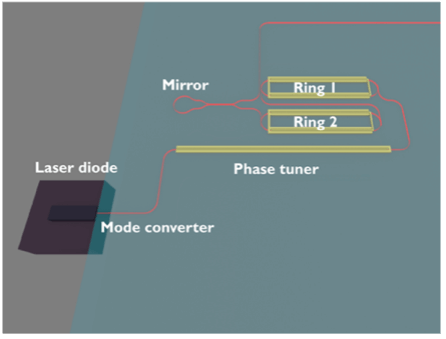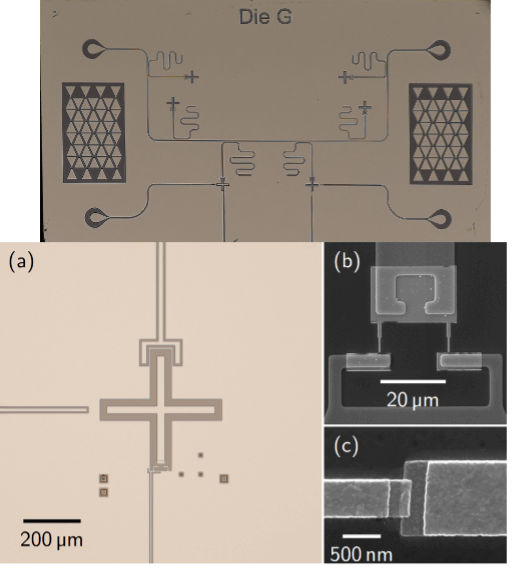Atoms can be controlled by manipulating their internal states using agile, quiet and reliable laser sources. An external-cavity diode laser (ECDL) is a crucial enabling technology to realize such laser sources since it allows for the narrowing of the linewidth of a laser diode and precise tuning of the laser frequency. This project aims to miniaturize the external cavity using a photonic integrated circuit (PIC) (i.e., a single chip), which will increase the reliability and functionality of the optical frequency source for quantum experiments. A PIC ECDL will be designed and fabricated using aluminum nitride (AlN). Since several atomic transitions of interest in quantum applications are in the visible spectrum, AlN is an ideal material due to its large bandgap that allows for low-loss waveguide propagation. AlN also enables key functionality for preparing narrow linewidth and agile optical frequencies. Thus, an AlN waveguide will be fabricated and tested to ensure low waveguide losses at visible wavelengths. An external cavity feedback laser will be fabricated by coupling a laser diode directly into the AlN waveguide. A micro-ring resonator feedback circuit will be used to select and narrow the laser output. The light will be further coupled into fibre optics for delivery to atoms in a vacuum chamber, demonstrating the viability of using PIC ECDLs to interact with atomic energy levels. This AlN PIC ECDL would be a compact optical frequency source that could help enhance existing quantum experiments, enable experiments currently unviable with bulk optical setups and allow for the translation of quantum atomic technologies out of the laboratory (i.e., large-scale quantum computation, high-precision gravimeters for resource mapping and portable optical atomic clocks).

Figure 1. A conceptual render of an external cavity diode laser in an aluminum nitride integrated photonic circuit.
Related Content

Building Blocks for Quantum Neuromorphic Computing: Superconducting Quantum Memcapacitors
Quantum neuromorphic computing (QNC) is a novel method that combines quantum computing with brain-inspired neuromorphic computing. Neuromorphic computing performs computations using a complex ensemble of artificial neurons and synapses (i.e., electrical circuits) to emulate the human brain. QNC may lead to a quantum advantage by realizing these components with quantum memory elements, or memelements, which […]
June 12, 2023
Novel Superconducting Qubits for Error-Corrected Processors
Summary In this project, we develop novel superconducting qubits for error-corrected processors to enable large-scale quantum computing. Our design efforts will specifically target error-corrected architectures through a variety of paths. Possible features will include built-in parity measurements and the use of bosonic codes, such as Fock state and Cat codes, as our starting focus. Early […]
June 26, 2019

Enabling Next-Generation Sustainable Computing through Novel Multi-Valued-Logic Quantum Devices
As the demand for digital services grows, so does the need for data centres and transmission networks. Unfortunately, these data systems consume vast amounts of energy, resulting in nearly 1% of all energy-related greenhouse gas emissions. This project aims to invent novel quantum devices for highly energy-efficient computing that may help reduce the global digital […]
June 12, 2023

Zero-Dimensional Quantum Materials for the Next Generation of Highly-Selective Chemical Sensors
Summary Heavy metals are a major public health concern and their on-site detection in water supplies is not well served by existing lab techniques. We develop a new multi-modal platform comprising functionalized quantum dots of two-dimensional materials (2D-QDs) for the sensing of four highly-toxic heavy metal pollutants (arsenic, cadmium, lead and mercury). The zero-dimensional […]
March 11, 2019

